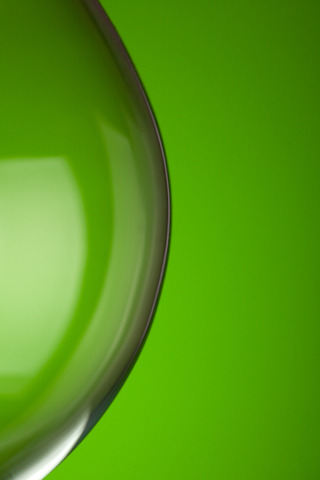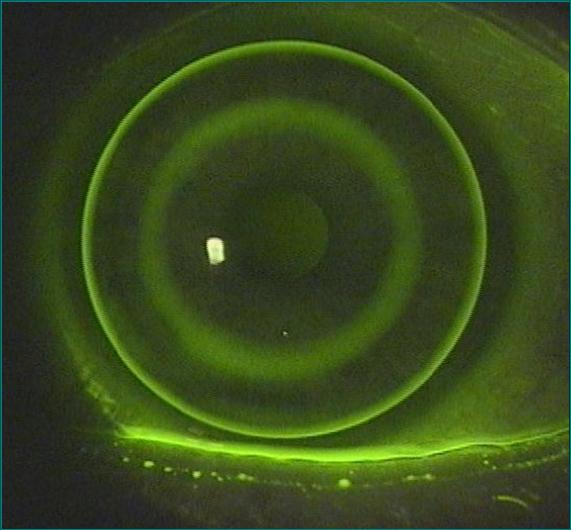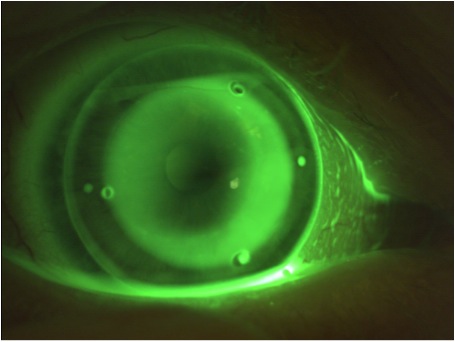|
|

International Newsletter and Forum on Rigid Gas Permeable Contact Lenses, Corneal Shape, Health and Vision |
|
|
|
|
|
|
|
|
|
|
Transparent Transplant

We are gearing up for the 2014 Global Specialty Lens Symposium a little over a week from now. One session features a global panel on contact lens management of the post-corneal graft patient. Panellists (like Ann Pyck from Belgium) will share with us why post-graft patients are among the most difficult in their practices to fit with lenses. Quality of the endothelium plays a crucial role in this. And the goal, of course, is 'how to keep the transplant transparent.' Participants will also share how we manage our post-graft patients: using large diameter scleral lenses as an option (like Boris Severinsky from Israel) or by using using reverse geometry scleral lenses and piggyback lenses as an option (Langis Michaud from Canada). Korine van Dijk from the Netherlands will share with us her 'Inside information' - notes and recommendations from a large corneal transplant clinic - on when to fit lenses after transplant and what to look for. What is the role of good old (R)GP lenses? See the case report below in this newsletter. Want to prepare, or won't be able to join us in Vegas? My New Year's tip of the month is to see Loretta Szczotka-Flynn's 1.5 hour free webinar that can be seen o n the GPLI.info website (see also the GPLI item below). Graft rejection fortunately is not very common, as explained in the lecture, with keratoconus cases having the fewest complication rates. And luckily, only about 10% or so of keratoconus patients will undergo a corneal transplant. But with about 50% of the patients still needing contact lenses after the transplant, we need to be extremely cautious, but also open and transparent, about this with our patients. |
|
Plasma Treatment

Contact lens safety discussions do not usually focus on (R)GP lenses, as their relative safety is unquestioned and unparalleled. However, a current study investigated the impact of plasma surface modification on bacterial adherence to rigid contact lens materials and found that this could significantly reduce bacterial adhesion for both Staphylococcus aureus and Pseudomonas aeruginosa. In conclusion, the authors state that plasma surface modification significantly decreases bacterial adhesion to fluorosilicone acrylate (R)GP contact lenses and therefore, in addition to its advantages of low cost and ease of application, plasma surface modification decreases bacterial adhesion to specific contact lenses and is expected to improve contact lens wear safety.
Wang et al - Eye & Contact Lens, Nov 2013
|
|
Epithelial Thick-less

Qian et al used automatically generated Fourier-domain optical coherence tomography (FD-OCT) to study the pachymetry maps of the corneal epithelium in children wearing orthokeratology (OK) lenses. Patients were divided into two groups of children according to the duration of OK lens treatment (group 1: 14 days or less, n=28; group 2: 14 days or more, n=32) plus a control group not wearing OK lenses, n=44. The refractive changes predicted by Munnerlyn's formula were less than the actual refractive changes measured in both OK groups, the investigators found. They concluded that epithelial thickness maps automatically generated by FD-OCT can provide regional information about corneal epithelium thickness following overnight wearing of OK lenses.
|
|
Not Skipping over Skippers

In this study by Santolaria et al, 44 patients (29 women and 15 men, mean age 24±9 years), with a baseline spherical equivalent refractive error of −2.40±0.94D and astigmatism up to −0.5D, were corrected with orthokeratology lenses. More than 50% of patients in this study skipped lens wear at least 1 night per week. The most common wearing pattern was 6-8 hours a day for 73%, with 55% of patients wearing lenses every 2-3 nights only. Subjective vision scores after lens removal was 9.1 after having worn the lenses and 8.1 after skipping lens wear for 1 night. Subjective vision scores before lens insertion at the end of the day was 6.9 and 5.8, respectively. The number of hours until noticeable blur was reduced with increased level of baseline myopia. The authors concluded that orthokeratology patients can show an irregular wearing pattern after 1 year of treatment that can have a significant effect on the subjective visual performance over the next day of skipping lens wear.
|
|
Taking a Break
 Can wearing time be used as a measure of success in scleral lens wear for patients with irregular astigmatism? This is what a study by Ortenberg et al from Israel aimed to investigate. Retrospectively, 97 patients (155 eyes) were identified. The mean follow-up was 34±19 months. The daily wearing time was significantly improved by taking brief breaks for replenishing the lenses. Patients who took brief breaks every 4 to 5 continuous wearing hours had a significantly higher success rate (P<0.001) among all diagnosis groups. The success rate in terms of wearing time was also found to be higher in the keratoconus group than in the penetrating keratoplasty group (P<0.001). Can wearing time be used as a measure of success in scleral lens wear for patients with irregular astigmatism? This is what a study by Ortenberg et al from Israel aimed to investigate. Retrospectively, 97 patients (155 eyes) were identified. The mean follow-up was 34±19 months. The daily wearing time was significantly improved by taking brief breaks for replenishing the lenses. Patients who took brief breaks every 4 to 5 continuous wearing hours had a significantly higher success rate (P<0.001) among all diagnosis groups. The success rate in terms of wearing time was also found to be higher in the keratoconus group than in the penetrating keratoplasty group (P<0.001).
Ortenberg et al - Eye & Contact Lens, Nov 2013
|
 The GPLI website hosts a large number of interesting items for the eye care practitioner. The tab on the top of the homepage named 'resources' links to a list of useful tools such as conversion charts, a (R)GP lens calculator and a very useful searchable lens database. The 'education' tab links to an extended list of (R)GP-related case reports, as well as the webinar series mentioned in the above column. If the 'lecture series option' is chosen, one can pick from four (!) lectures on Keratoconus by Christine Sindt covering everything from the basics to troubleshooting, and a Corneal Reshaping Update by Craig Norman. Other topics include Optimizing GP Initial Comfort by Edward Bennett and Pediatric Fitting Techniques again by Christine Sindt. Eye care practitioners can also hit the 'Ask an Expert' button on the GPLI website for personalized help. The GPLI website hosts a large number of interesting items for the eye care practitioner. The tab on the top of the homepage named 'resources' links to a list of useful tools such as conversion charts, a (R)GP lens calculator and a very useful searchable lens database. The 'education' tab links to an extended list of (R)GP-related case reports, as well as the webinar series mentioned in the above column. If the 'lecture series option' is chosen, one can pick from four (!) lectures on Keratoconus by Christine Sindt covering everything from the basics to troubleshooting, and a Corneal Reshaping Update by Craig Norman. Other topics include Optimizing GP Initial Comfort by Edward Bennett and Pediatric Fitting Techniques again by Christine Sindt. Eye care practitioners can also hit the 'Ask an Expert' button on the GPLI website for personalized help.
|
Special (R)GP Lens Design Post-PKP

Our patient underwent penetrating keratoplasty (PKP) about 2 years ago. The shape of the cornea changed dramatically from a steep keratoconus-induced shape to a very flat central graft; in addition, there was a big transition 'hump' in the graft-host interface. Previous (R)GP fittings have failed because of discomfort and frequent loss of the contact lens. The latest (R)GP lens exhibited dramatic inferior liftoff, as shown in the case report via the link below. The new approach was to start the fitting process from the peripheral cornea. As soon as parallel fitting in the periphery was achieved, the next step was to avoid pressure on the graft-host interface. Finally, the central base curve was defined. A reverse geometry design ended up being the perfect option to overcome the transition hump in the graft-host interface.
|
Global Specialty Lens Symposium (GSLS) - Las Vegas
GSLS is gearing up for the 2014 edition of its annual 3.5 day meeting that focuses on the latest techniques and technologies for the successful  management of ocular conditions using today's specialty contact lenses. Accredited for continuing education under COPE, NCLE, and JCAHPO, the meeting will offer approximately 30 credit hours - and last year hosted participants from 32 countries. The first day of the symposium hosts special meetings, where topics like Myopia Control, Billing and Coding, the Aging Eye and Scleral Lens Fitting get all the attention they deserve in sessions from 8:30am to 12:30pm. The full GSLS program is available online; the meeting will be held in the Rio Hotel, Las Vegas (USA). management of ocular conditions using today's specialty contact lenses. Accredited for continuing education under COPE, NCLE, and JCAHPO, the meeting will offer approximately 30 credit hours - and last year hosted participants from 32 countries. The first day of the symposium hosts special meetings, where topics like Myopia Control, Billing and Coding, the Aging Eye and Scleral Lens Fitting get all the attention they deserve in sessions from 8:30am to 12:30pm. The full GSLS program is available online; the meeting will be held in the Rio Hotel, Las Vegas (USA).
|
|
Upcoming Events
- GSLS, January 23-26 2014, Las Vegas US
- 100% optical, February 16-18, Londen UK
- NCC 2014, March 16-17 2014, Veldhoven NL
- Cornea Day, April 25, Boston USA
- BCLA, June 6-9, Birmingham UK
|
|
|
|
|
|
|
I-site is an educational newsletter that is distributed on a monthly basis and provides an update on rigid gas permeable related topics (scientific research, case reports and other publications worldwide). I-site is objective and non-political. Its editor Eef van der Worp, optometrist, PhD, FAAO, FBCLA, FIACLE, FSLS is a lecturer for a variety of industry partners, but is not related to any specific company. Please contact us at: i-site@netherlens.com.
|
|
|